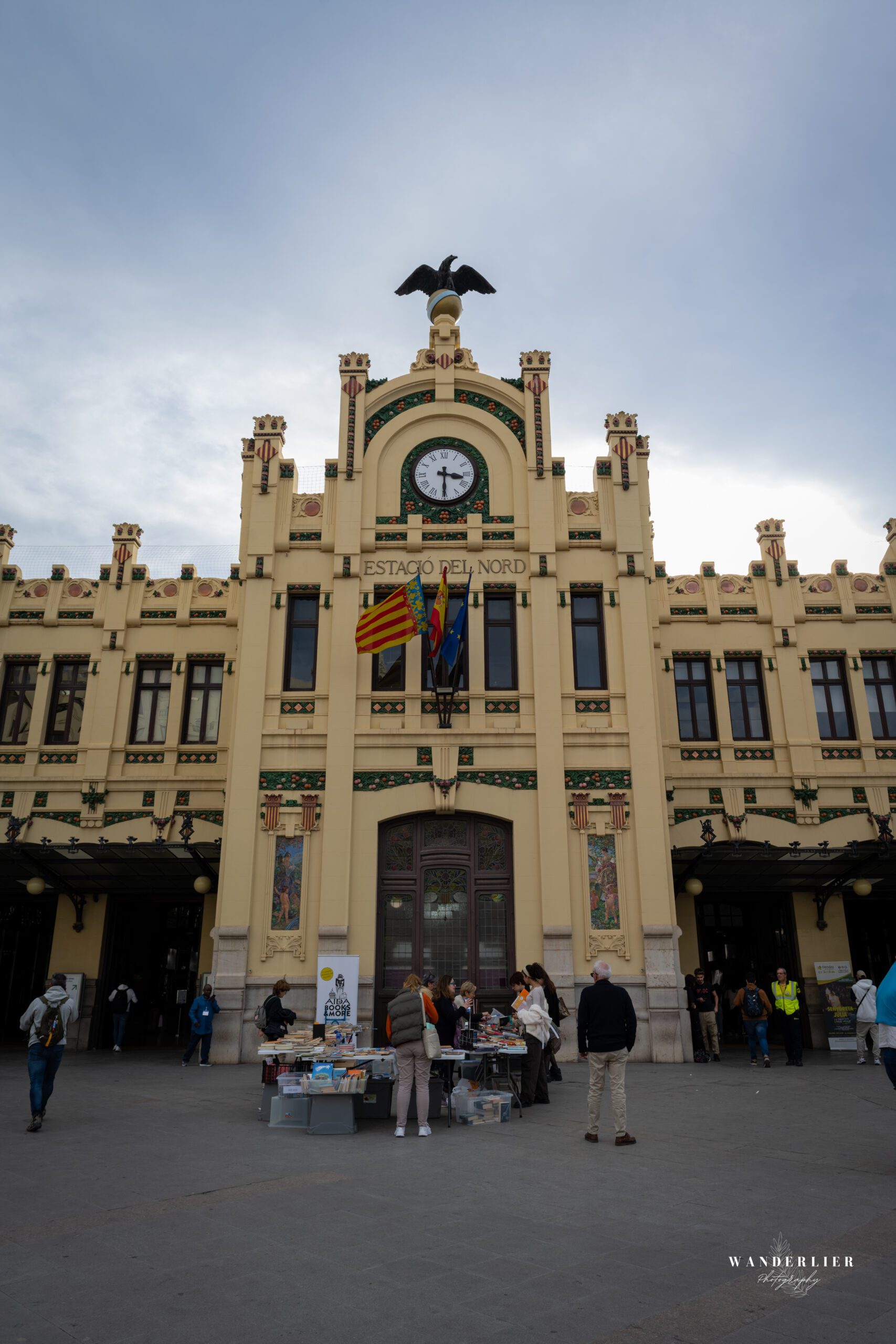The Valencia Tourist Card is an essential companion for visitors looking to explore the vibrant city of Valencia, Spain. Available for different durations, this card offers a range of benefits and discounts that make traveling and exploring Valencia even more advantageous.
One of the main benefits of the Valencia Tourist Card is unlimited use of the city’s public transportation, including buses, metros, and trams. This allows travelers to easily and efficiently get around Valencia and access its many sights and destinations.
Additionally, the card provides free access or significant discounts to popular attractions, museums, and sites in Valencia. These include the City of Arts and Sciences, the Bioparc Valencia zoo, and the Royal Palace of the Almudín. This makes the Valencia Tourist Card not only a convenient travel companion but also a cost-effective way to explore the city’s cultural heritage.
Moreover, the card offers discounts at selected restaurants, shops, and services in Valencia. This means visitors can save money not only on transportation and entrance fees but also on daily expenses during their stay.
The Valencia Tourist Card can be easily purchased online and comes with a detailed guide listing all the benefits and participating locations. The different available durations, ranging from 24 hours to 72 hours, allow visitors to tailor the card to the length of their stay and specific travel needs.
Ciudad de las Artes y las Ciencias
Ciudad de las Artes y las Ciencias, vertaald als City of Arts and Sciences is an impressive complex located in the heart of Valencia. It is renowned for its futuristic architecture, innovative design, and cultural significance. Designed by the renowned Spanish architect Santiago Calatrava, along with Félix Candela and others, the complex has become an iconic symbol of Valencia’s commitment to art, science, and technological progress.
Opened in phases starting from the late 1990s, the City of Arts and Sciences is an architectural marvel with several striking structures, each with a unique design.
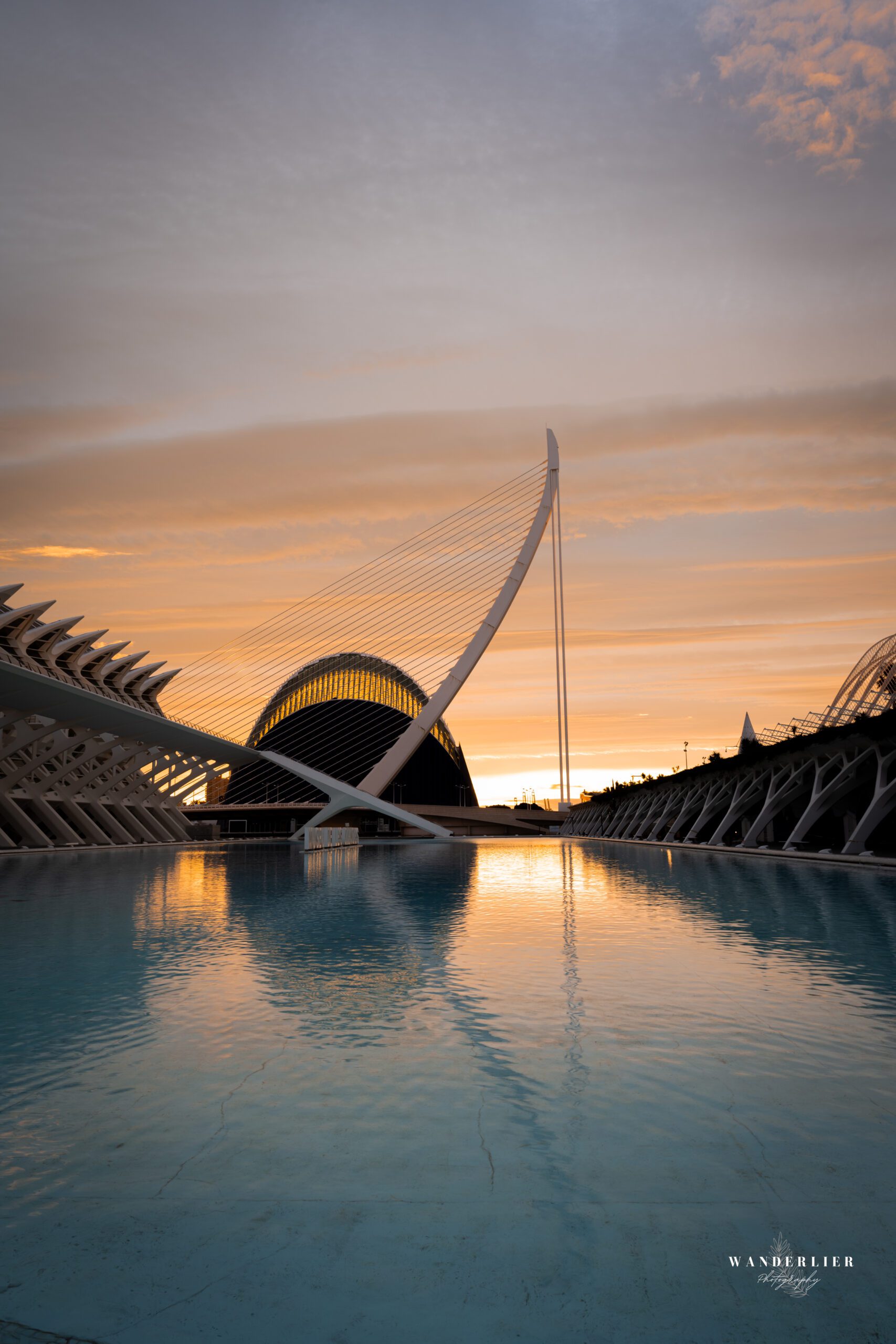
L’Oceangrafic
L’Oceanografic is a remarkable marine complex located in the beautiful city of Valencia. This vast aquarium, opened in 2003, is the largest seawater aquarium in Europe and is part of the impressive Ciudad de las Artes y las Ciencias (City of Arts and Sciences) complex. It was designed by the renowned architect Santiago Calatrava and Félix Candela.
L’Oceanografic is known for its extraordinary architecture and innovative approach to showcasing marine biodiversity. It is one of the top tourist attractions in Valencia, drawing thousands of visitors from around the world each year.
The aquarium houses a stunning variety of marine life, including fish, mammals, birds, and reptiles. With over 45,000 animals from 500 different species, it is a true treasure trove of the oceans. Visitors can walk through tunnels beneath enormous water tanks, surrounded by the captivating underwater world.
What makes L’Oceanografic unique is that it is divided into various themed areas representing different ecosystems. From the icy waters of the South Pole to the warm and colorful reefs of the Red Sea, it offers an immersive experience that is both educational and enjoyable for all ages.
In addition to its focus on education and raising awareness about marine conservation, L’Oceanografic has also made significant efforts in research and the preservation of endangered species. It serves as a center for scientific research and contributes to global efforts to maintain the health of the oceans.
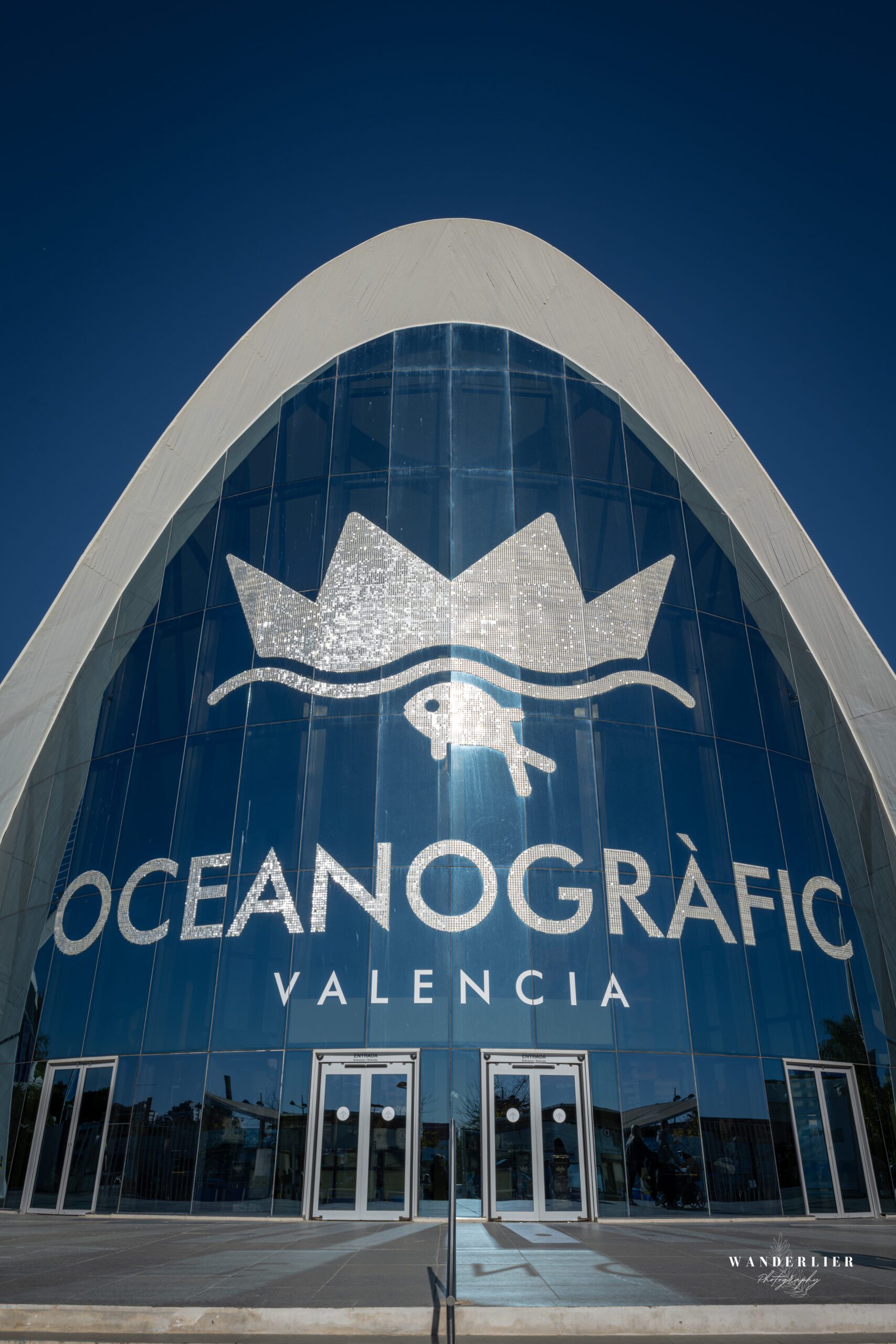

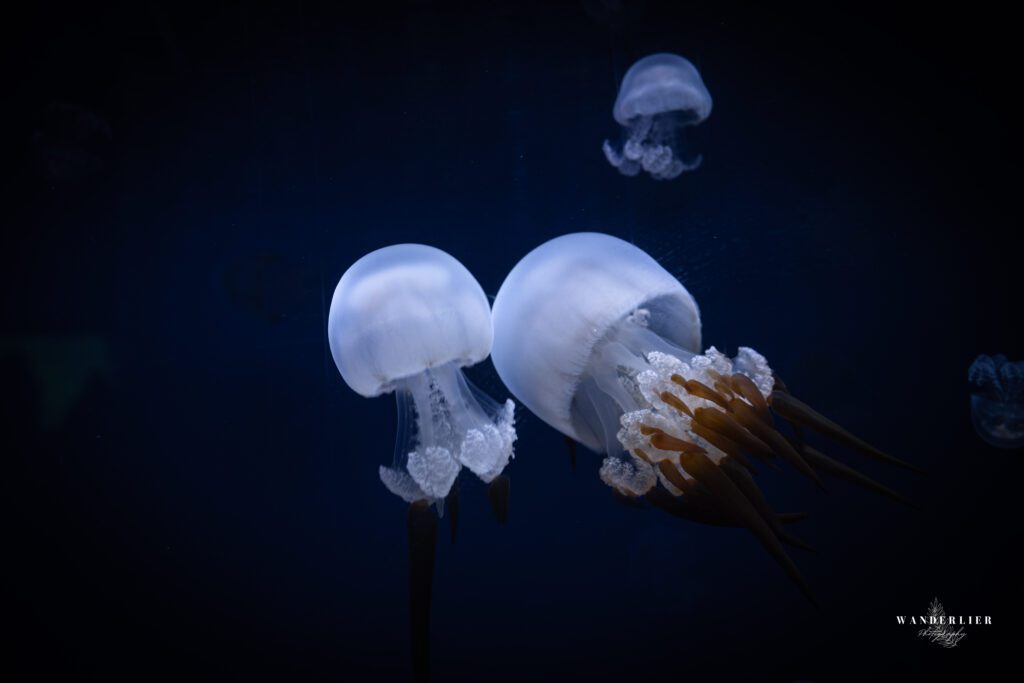






L’Hemisfèric
L’Hemisférico, located in the breathtaking Ciudad de las Artes y las Ciencias complex, is a striking architectural gem and a leading example of modern design. Designed by renowned architect Santiago Calatrava, this futuristic building opened its doors in 1998 and has since attracted countless visitors.
This unique building is shaped like a giant eye and houses the world’s largest tilting dome, which serves as an immersive planetarium. It is an impressive example of the integration of science, technology, and art. L’Hemisférico combines education and entertainment in an innovative way, offering visitors an extraordinary journey through the universe.
The highlight of L’Hemisférico is undoubtedly the impressive planetarium, where visitors are taken on an immersive journey through the night sky. With advanced projection technologies, a captivating experience is created, making it feel as though you are floating in space.
In addition to the planetarium, L’Hemisférico also features an IMAX cinema, where visitors can enjoy immersive films on a giant screen. The advanced technology and surround sound system provide a top-quality movie experience.
The building is surrounded by water and reflects itself in a surrounding pool, adding to its visual splendor. The location offers picturesque views, especially in the evening when the lighting of the complex transforms the surroundings into a magical ambiance.
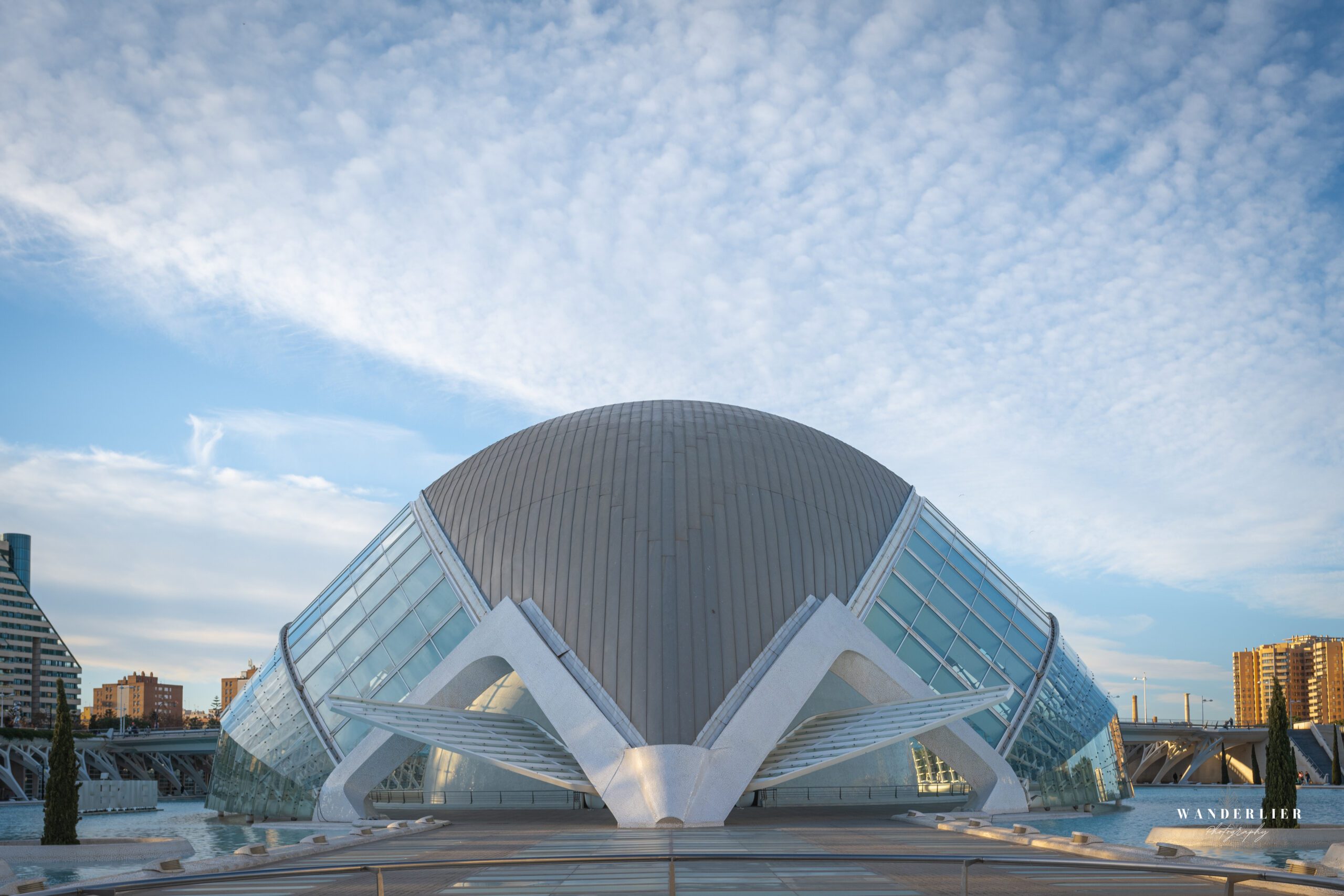
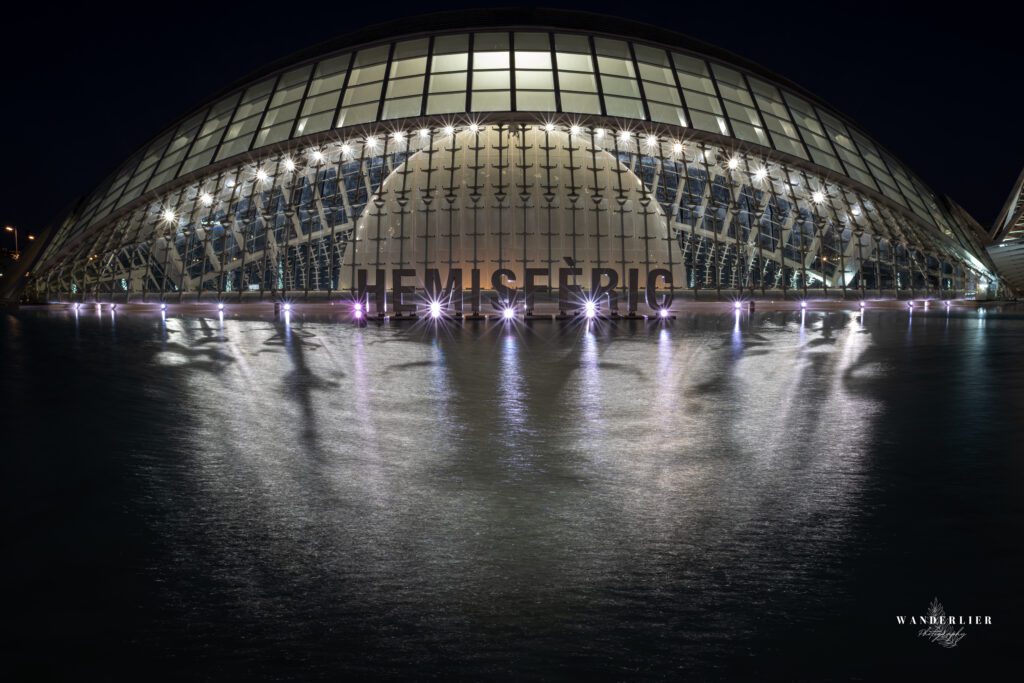
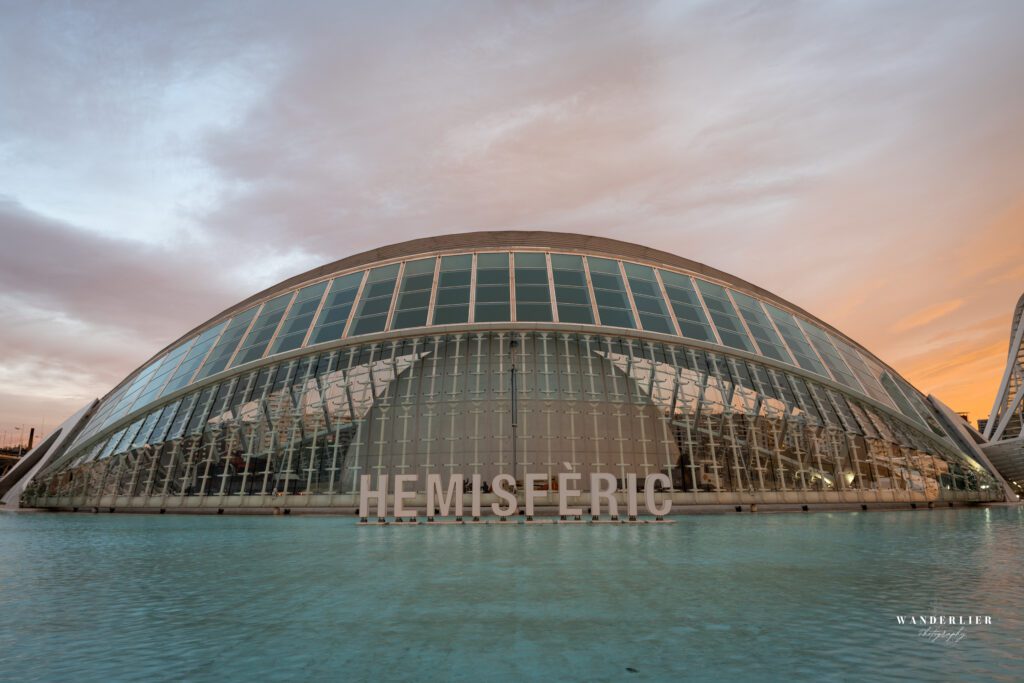
El Museu de les Ciències Príncipe Felipe
The Museu de les Ciències Príncipe Felipe, located in the impressive Ciudad de las Artes y las Ciencias, is an exciting science museum known for its interactive and educational approach. The museum opened its doors in 2000 and was designed by Santiago Calatrava, who succeeded in creating an architectural masterpiece that sparks the curiosity of visitors.
This striking museum is named after Prince Felipe, the current King of Spain, and aims to stimulate scientific understanding through engaging and hands-on exhibits. The museum is divided into various zones with themes such as science, technology, and physics, offering a wide range of interactive experiences.
A highlight of the museum is the science workshop, where visitors can discover the principles of physics and technology through practical experiments. The exhibits are designed to appeal to both children and adults, making learning and discovery an enjoyable experience.
Additionally, the museum features an IMAX cinema that screens scientific films on an impressive large screen. This contributes to the museum’s educational mission by informing visitors about scientific developments in an immersive way.
The building itself is an architectural feat with a modern and futuristic design. The imposing structure attracts not only science enthusiasts but also admirers of contemporary architecture.
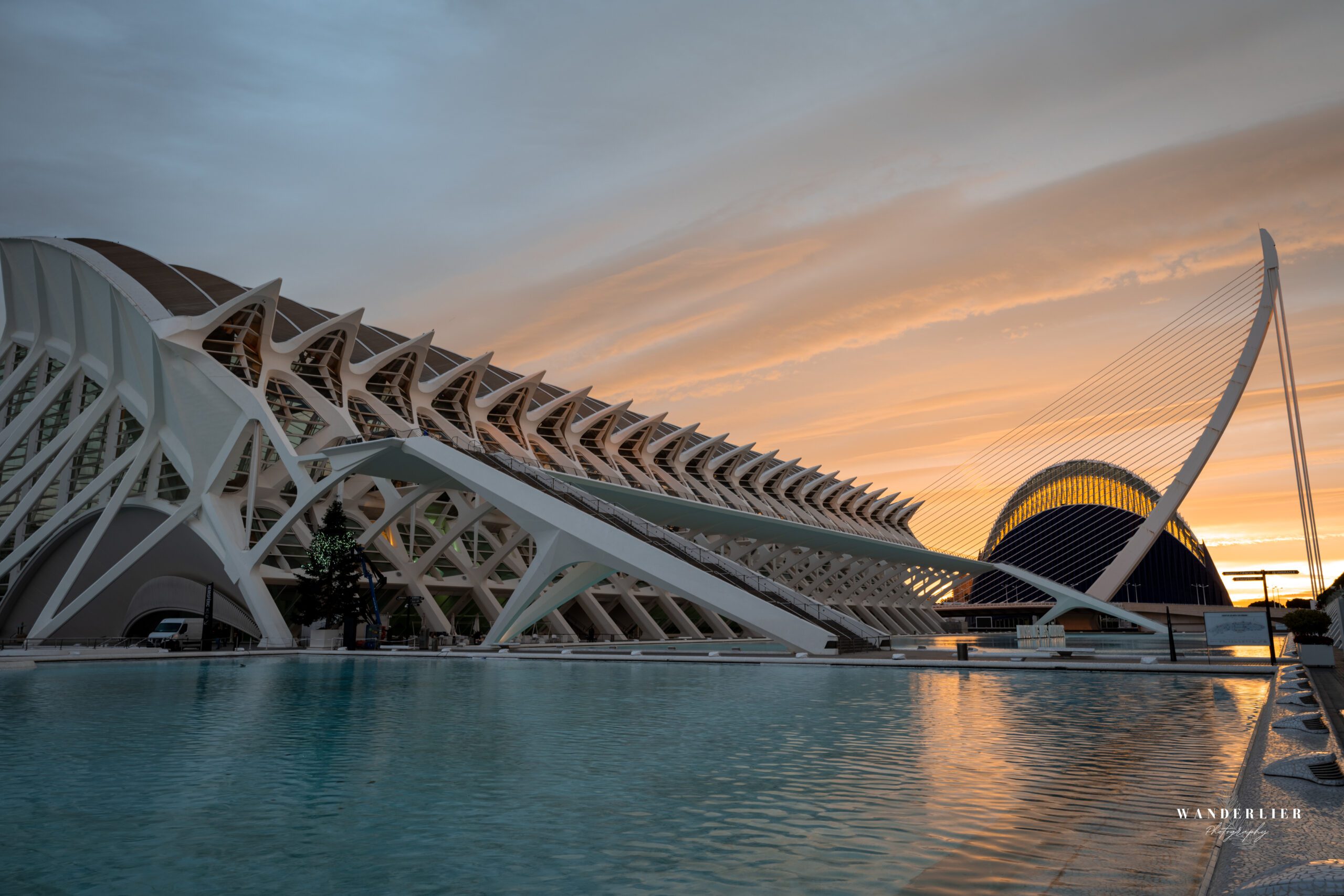
Palau de les Arts Reina Sofia
The Palau de les Arts Reina Sofia, located in the beautiful Ciudad de las Artes y las Ciencias, is a striking opera house and cultural complex that offers an impressive blend of architecture, art, and performing arts. The palace opened its doors in 2005 as part of the ambitious project by architect Santiago Calatrava.
This remarkable opera house is named after Queen Sofia of Spain and stands as a prominent symbol of modern architecture in Valencia. Calatrava’s design integrates innovative structures with traditional elements, creating a harmonious whole. The palace serves not only as a stage for opera but also for ballet, theater, and concerts.
The impressive exterior of the Palau de les Arts Reina Sofia is a visual treat, featuring striking white facades and a series of protruding structures that contribute to the visual splendor of the Ciudad de las Artes y las Ciencias. The palace itself houses four halls, including the main theater, which has more than 1,400 seats.
The cultural complex has contributed to Valencia’s status as a major center for performing arts in Spain and Europe. It offers a varied program of performances, ranging from classic operas to contemporary productions. With world-renowned artists performing on stage, Palau de les Arts Reina Sofia has put Valencia on the map as a destination for cultural excellence.
Moreover, the palace serves as a meeting place for artists, musicians, and performing arts enthusiasts. It offers educational programs and workshops to engage the community and promote a love for art and culture. The complex also includes restaurants and other facilities, providing visitors with a complete cultural experience.
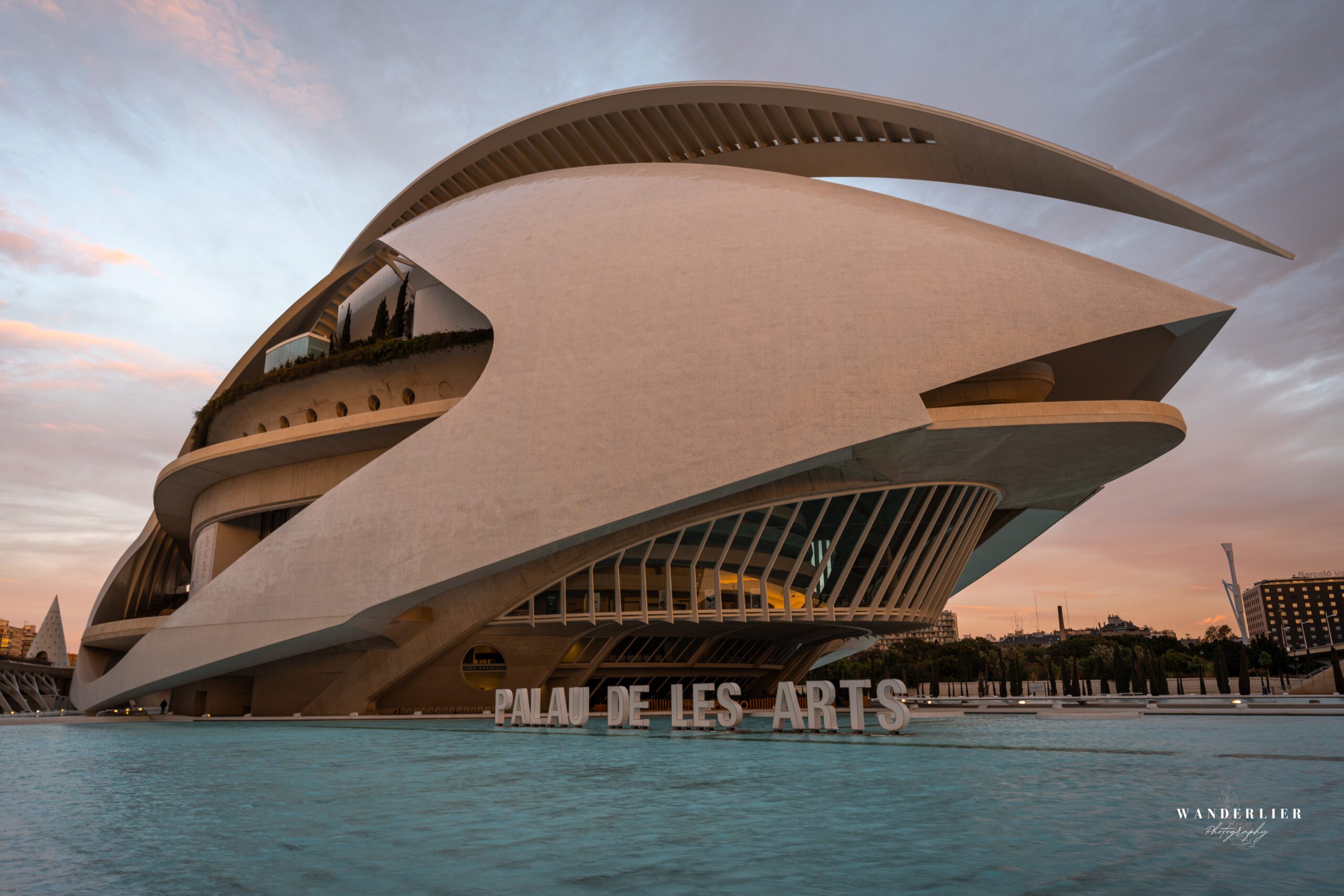
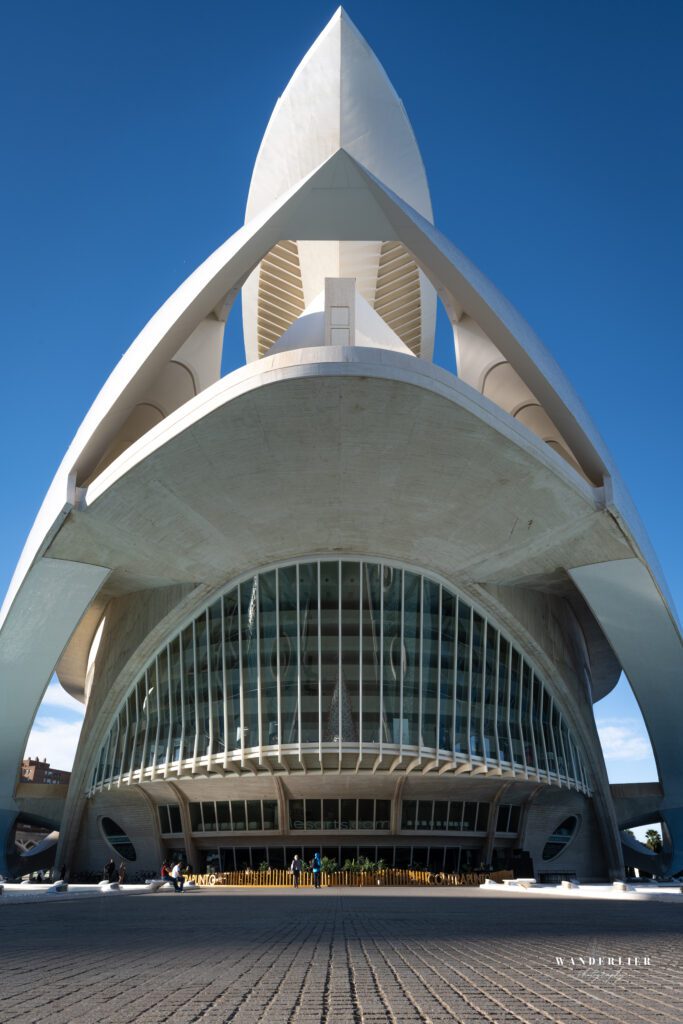
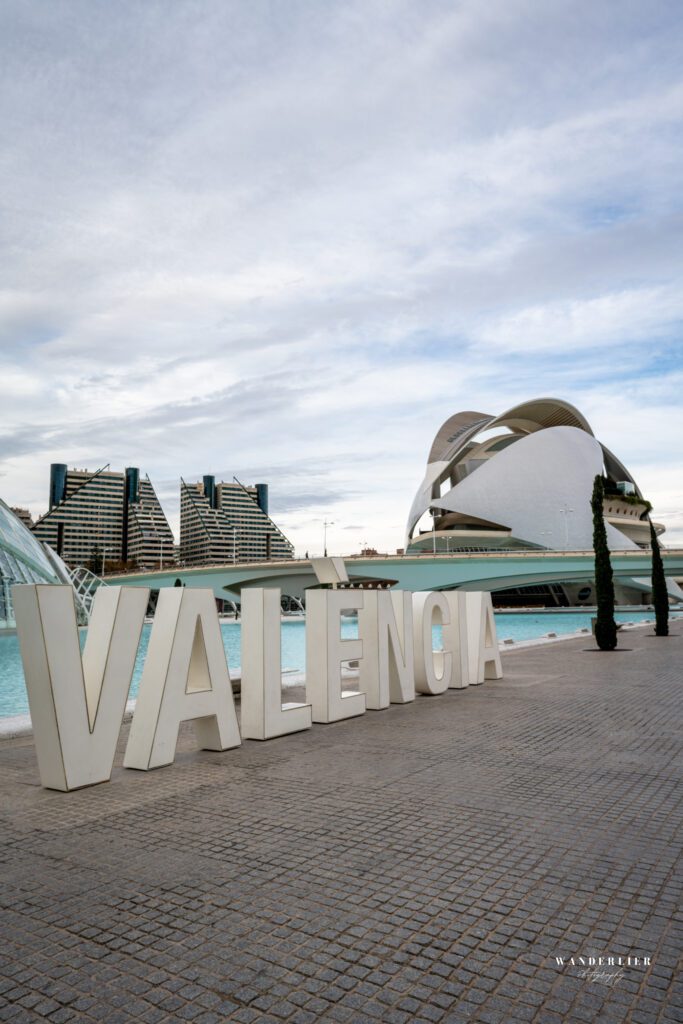
L’Umbracle
L’Umbracle, located in the enchanting Ciudad de las Artes y las Ciencias, is a remarkable green space that functions as a landscaped promenade. Designed by Santiago Calatrava, it opened in 2000 as part of the expansive cultural complex.
This unique structural element features an impressive series of arched structures covered with climbing plants, extending over a long path that invites visitors to take a leisurely and picturesque walk. L’Umbracle not only serves as an aesthetically pleasing passageway but also as an outdoor exhibition of native plant species from the Valencia region. It is a vibrant mix of architecture and nature, making it an ideal place for relaxation and contemplation.
As visitors stroll through L’Umbracle, they can enjoy a stunning view of the surrounding architectural beauty of Ciudad de las Artes y las Ciencias. In the evenings, the promenade transforms into an enchanting space with subtle lighting that creates a magical atmosphere.
L’Umbracle also serves as a venue for cultural events and exhibitions, making it a versatile addition to the cultural complex. It allows visitors to explore the relationship between humans and nature while enjoying the artistic and architectural splendor of the environment.
With benches and resting areas along the path, L’Umbracle is an inviting space for both locals and tourists to relax and enjoy the surroundings. It harmoniously blends greenery and architecture, making it the perfect complement to the modern and innovative appearance of Ciudad de las Artes y las Ciencias.
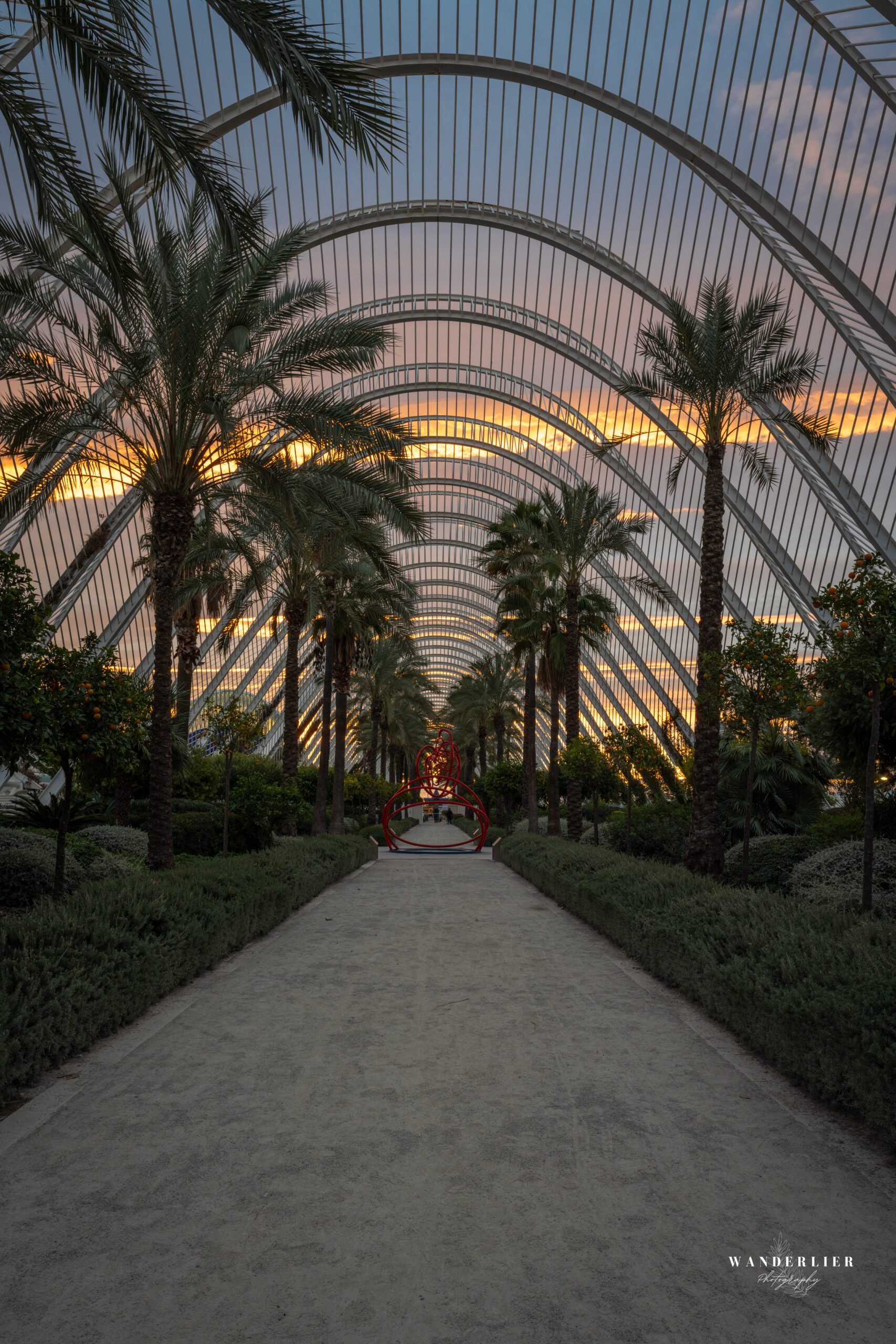
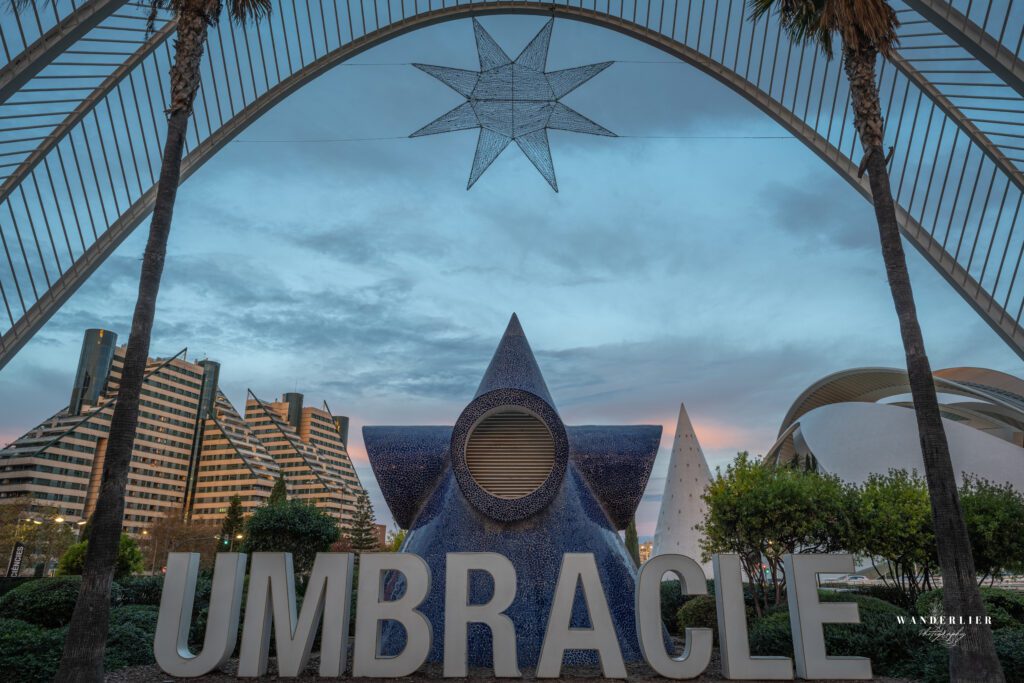
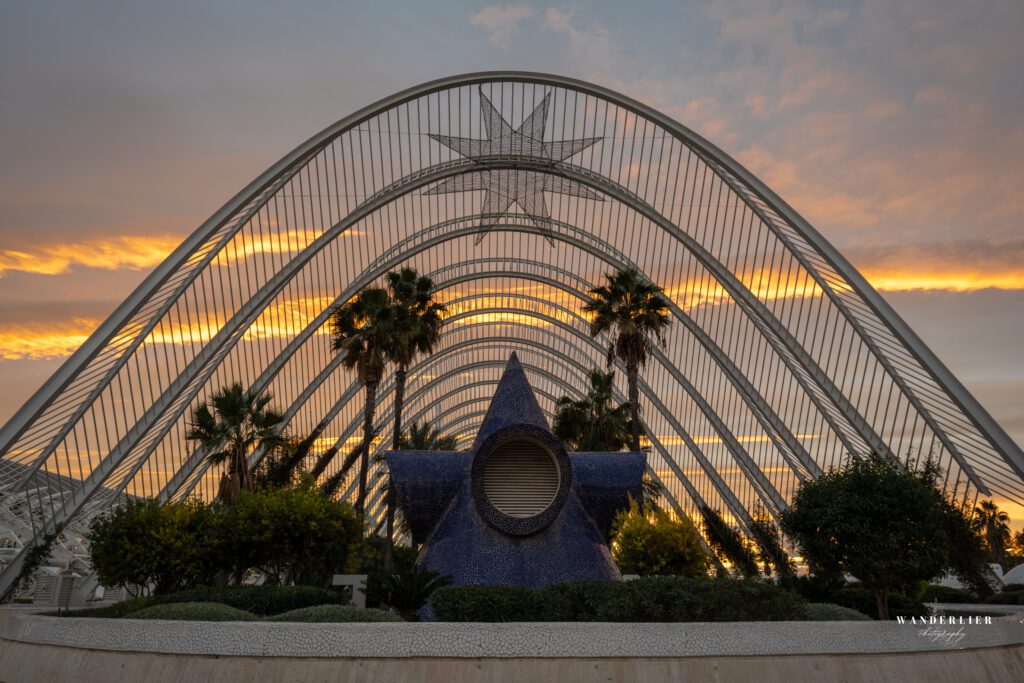
Àgora
Àgora, located in the striking Ciudad de las Artes y las Ciencias, is a notable multifunctional event hall designed by the renowned architect Santiago Calatrava. The building, which opened in 2009, features a unique design that blends modern architecture with avant-garde aesthetics.
The Àgora serves as a versatile space designed for various events, including sports competitions, concerts, exhibitions, and conferences. With its distinctive and recognizable shape, marked by a scaled structure and a transparent roof, the Àgora is not only a functional building but also a visually striking feature of Ciudad de las Artes y las Ciencias.
The name “Àgora” refers to the ancient Greek marketplace that served as a gathering place for social, political, and cultural activities. In line with this inspiration, Àgora offers a modern interpretation of this philosophy by creating a space that brings people together for diverse events and gatherings.
The striking design of the Àgora includes an impressive arch structure and a transparent roof that allows natural light to filter through, creating an open and airy atmosphere. These features make it not only functional but also aesthetically pleasing. The venue is equipped with modern amenities and technological facilities, making it suitable for a wide range of events.
The multifunctionality of the Àgora adds to the versatility of Ciudad de las Artes y las Ciencias as a whole. It serves as a dynamic and adaptable space that reflects the cultural and recreational diversity of Valencia. The venue is regularly used for both national and international events, making it an important hub for culture, sports, and entertainment in the region.
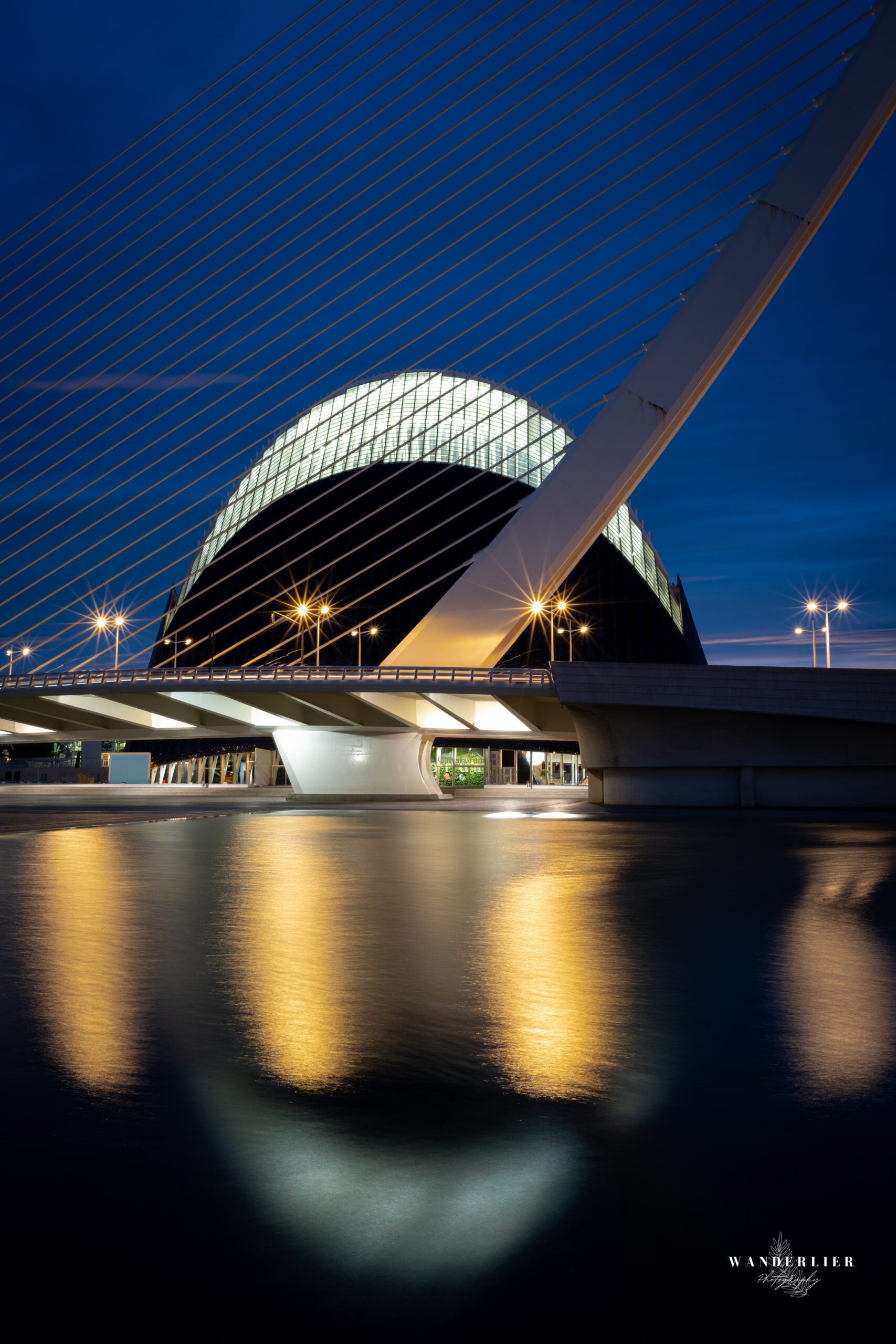
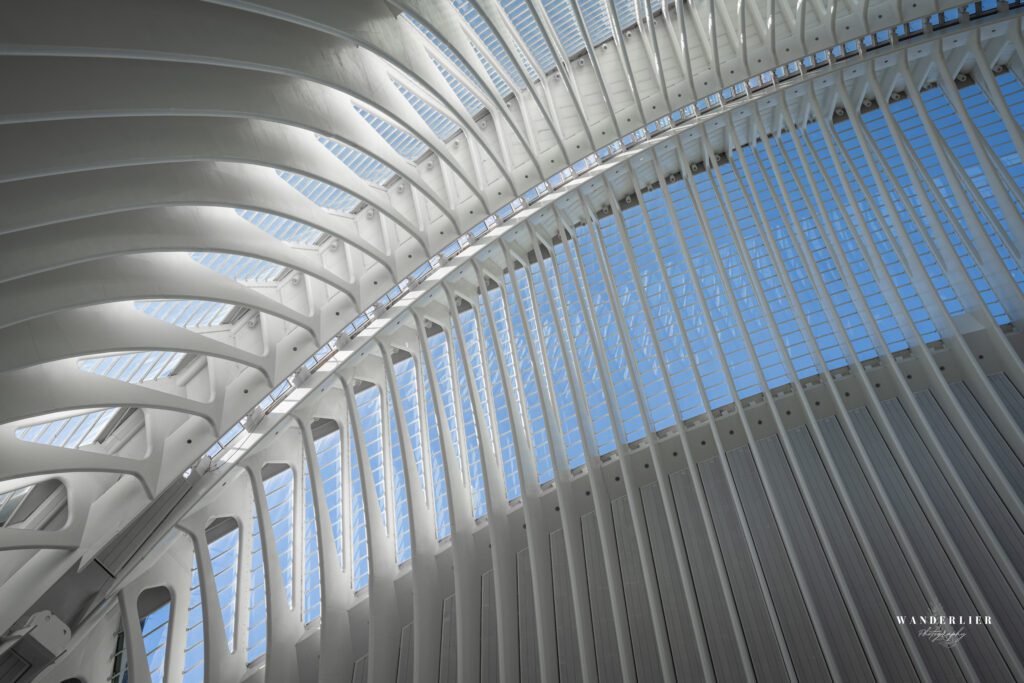
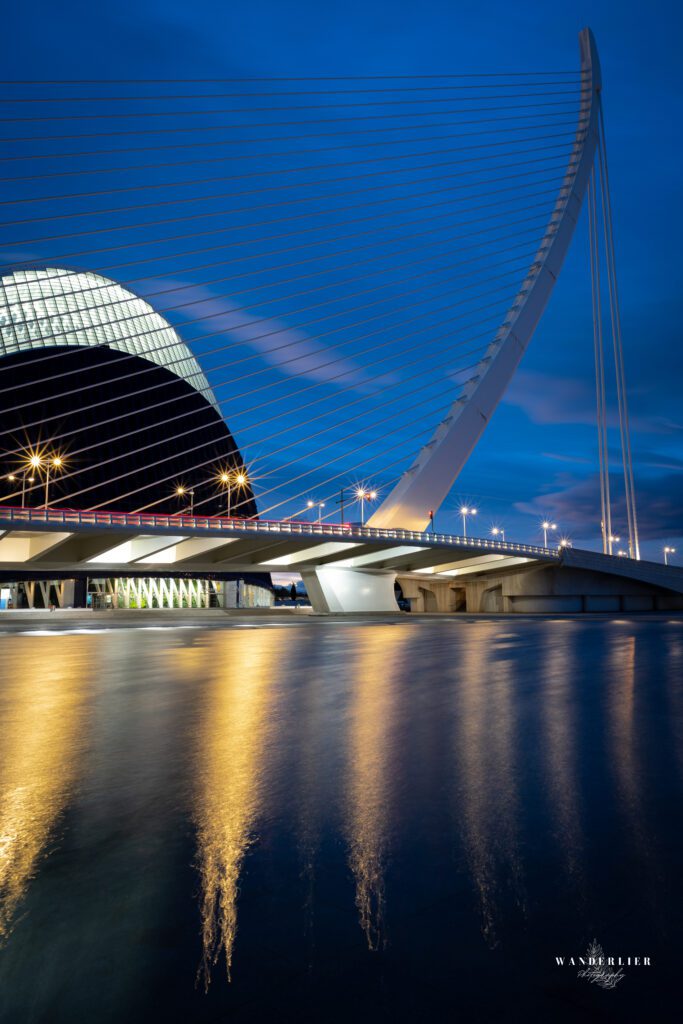
Mercado Central
The Mercado Central, located in the heart of Valencia, is a vibrant marketplace known as one of the largest and oldest covered markets in Europe. This bustling market, also referred to as the Central Market, opened its doors in 1928 and has since played a central role in the gastronomic and social life of Valencia.
The impressive building itself is an architectural gem with a beautiful dome and stained-glass windows, adding to the charm of the market. It is designed in an eclectic style with modernist and Gothic elements, making it both functional and aesthetically appealing.
The Mercado Central is a true paradise for lovers of fresh, local produce. Inside, you’ll find more than a thousand stalls offering a wide range of products, from fresh vegetables, fruits, and herbs to meats, fish, and local specialties. It is a culinary haven where both locals and tourists can enjoy the authentic flavors and aromas of the region.
In addition to the abundance of fresh products, the market also hosts numerous stalls selling regional delicacies, wines, olive oils, and handmade goods. The lively atmosphere and interaction with friendly vendors contribute to the unique shopping experience.
The Mercado Central is not just a place to shop but also a social meeting point. It is an excellent spot to experience the local culture and connect with the warm and welcoming atmosphere of Valencia.
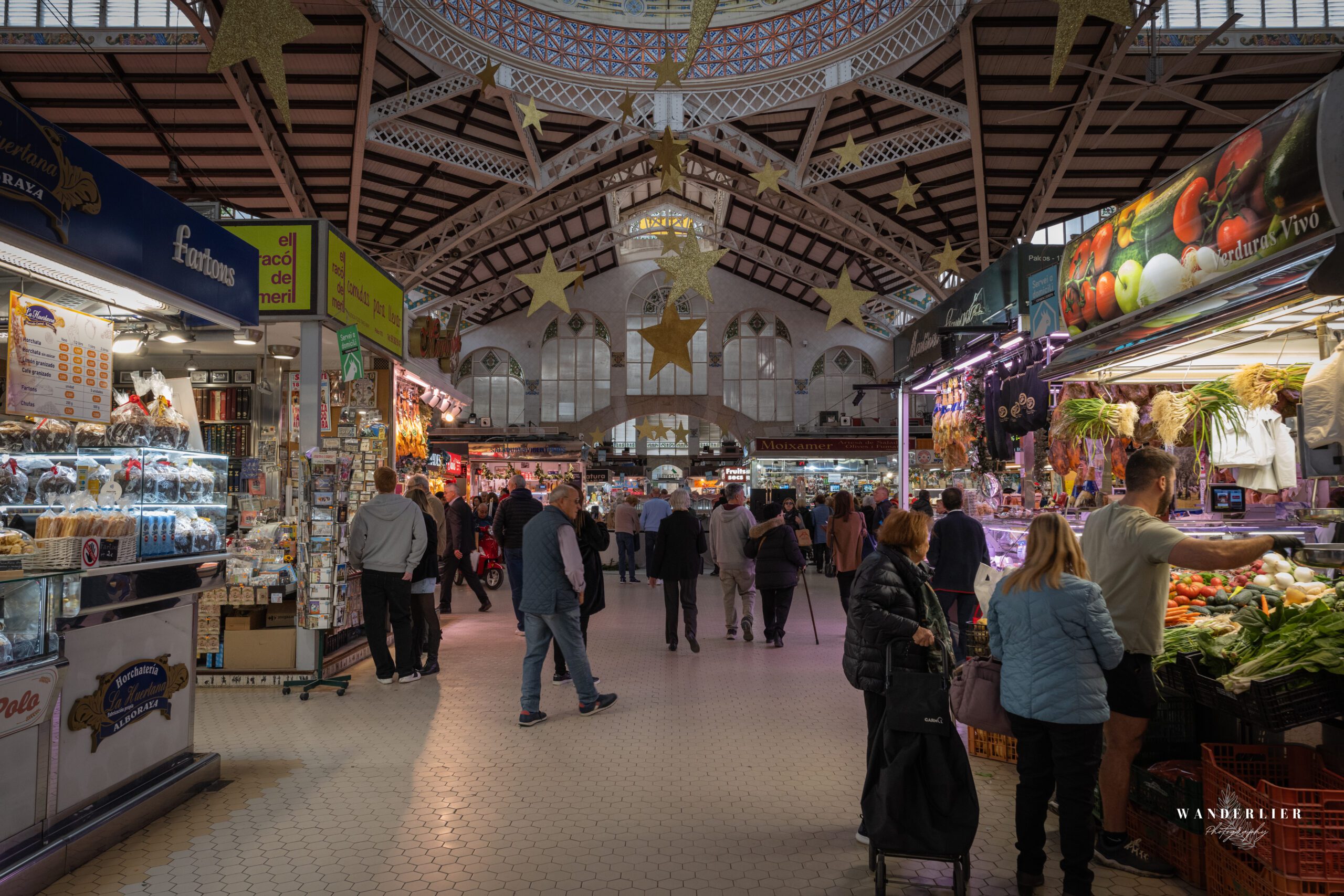
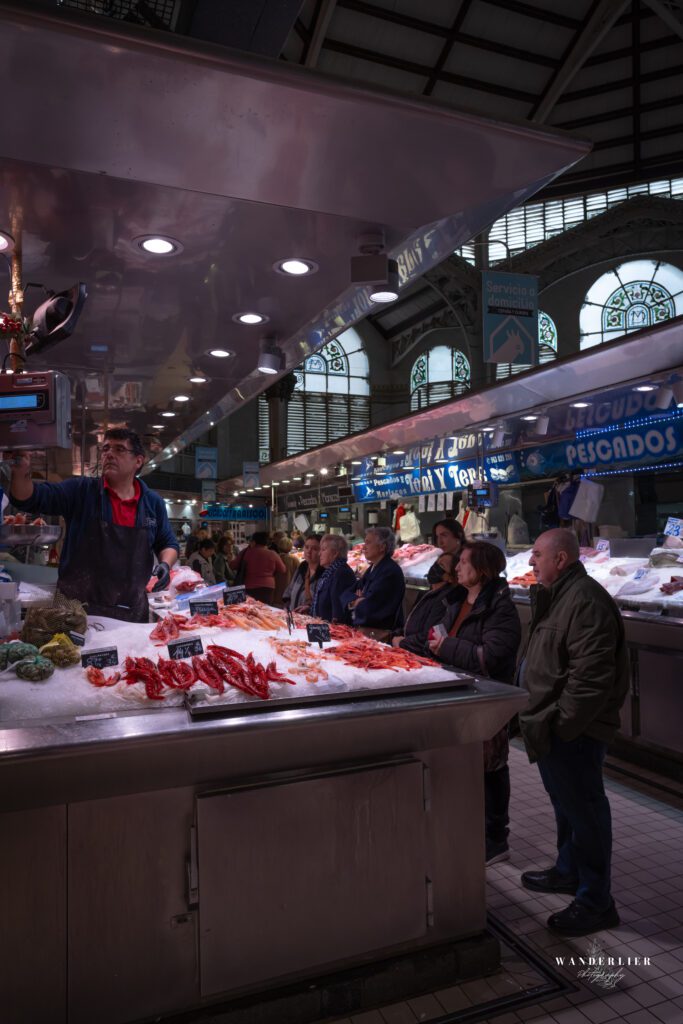
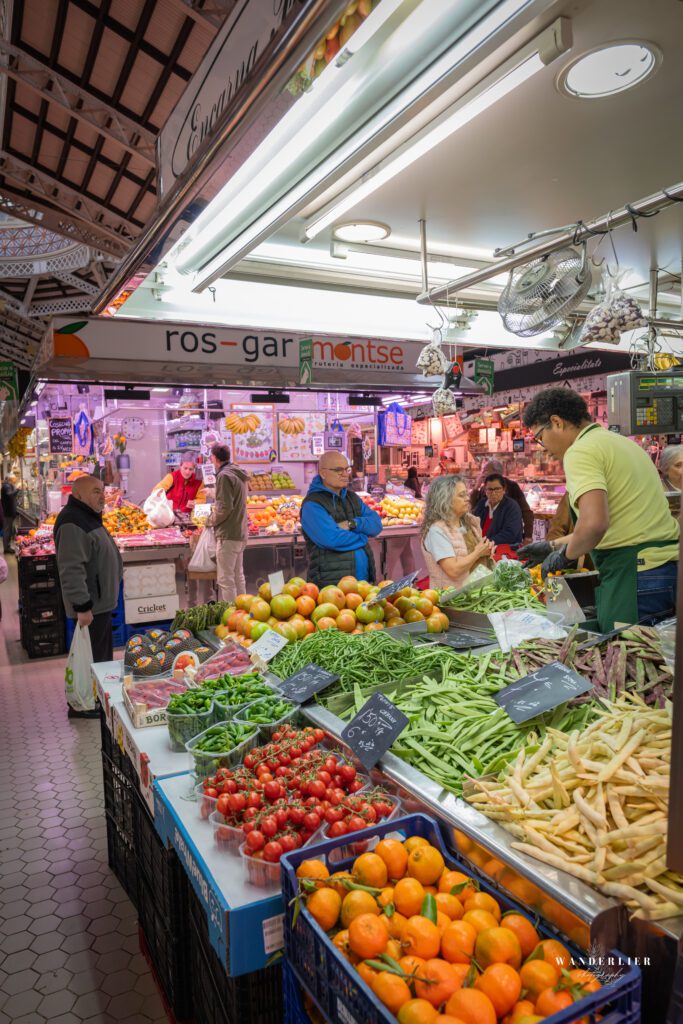
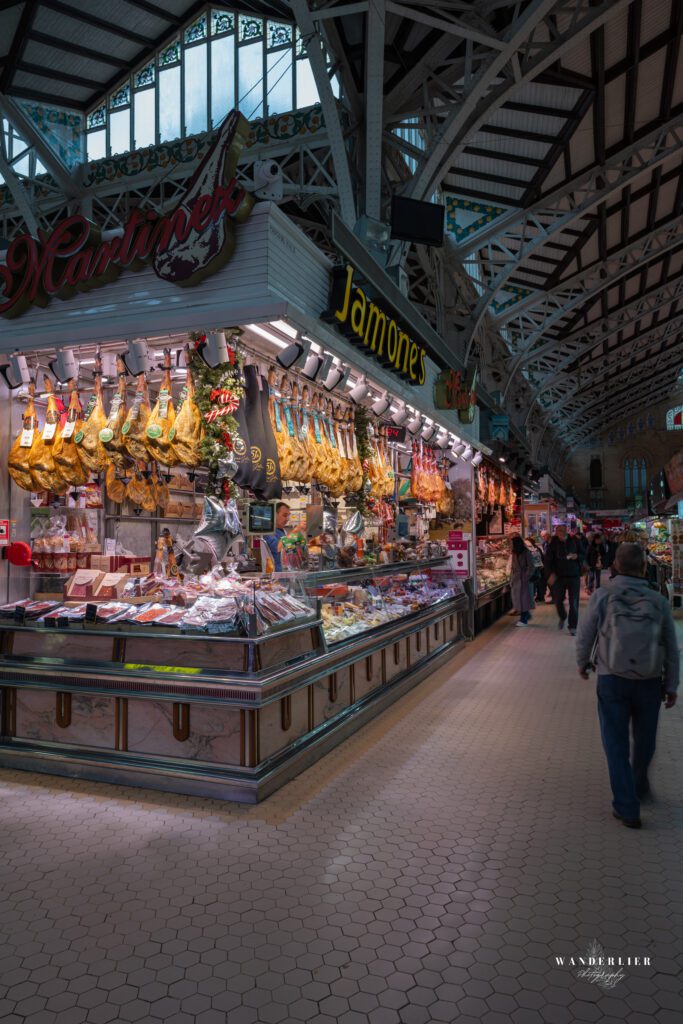
La Lonja de la Seda
La Lonja de la Seda, also known as the Silk Exchange, is a masterpiece of Gothic architecture located in the historic center of Valencia, Spain. Construction of this remarkable building began in 1482 and was completed in 1533. La Lonja is recognized as one of the most important Gothic civil buildings in Europe and has been listed as a UNESCO World Heritage site since 1996.
The imposing La Lonja was originally used as a trading exchange where silk merchants would meet and conduct business. The building’s design is attributed to architects Pere Compte and Joan Ibarra. The structure consists of four main parts: the Silk Exchange, the Tower, the Silk Hall, and the Council Hall, all beautifully adorned with Gothic details such as pointed arches, columns, and intricate ornaments.
The Silk Exchange, the central part of La Lonja, is an impressive space with beautiful vaulted ceilings and columns. This is where silk trade transactions were carried out, symbolizing the wealth of Valencia during the 15th century, when the city was one of Europe’s major silk producers.
The Tower of La Lonja offers a panoramic view of Valencia and is an excellent example of Gothic military architecture. It stands as a defining feature of the city’s skyline.
In addition to its historical significance, La Lonja is renowned for its stunning and detailed decorations, especially in the Council Hall. Here, visitors can admire remarkable frescoes and sculptures, including the famous painting The Bonfire by Pere Nicolau.
Today, La Lonja serves not only as a historic landmark but also as a cultural venue where visitors can explore the rich history of Valencia. Its Gothic splendor and historical significance make La Lonja de la Seda a must-visit destination for lovers of architecture, history, and culture in Valencia. It remains a timeless symbol of the city’s wealth and artistic heritage.
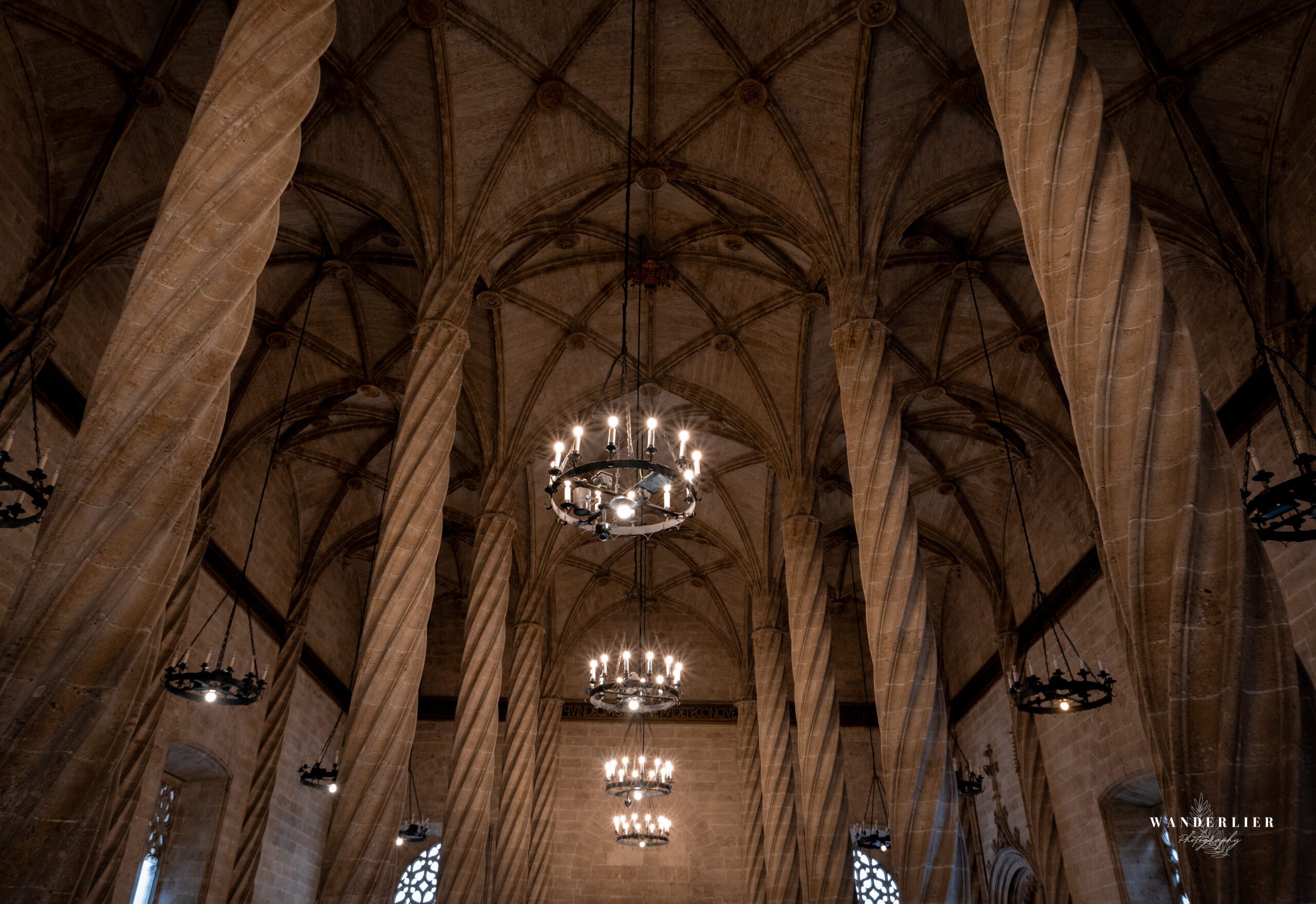
Plaça de l’Ajuntament
Plaça de l’Ajuntament, also known as City Hall Square, forms the central heart of Valencia, Spain, and is a vibrant square steeped in history, surrounded by impressive architecture. Located in the city’s center, this square has served over the years as a meeting place, an event venue, and a witness to the evolution of Valencia.
One of the standout buildings on Plaça de l’Ajuntament is the city hall, or Ayuntamiento. This majestic building, constructed in the 18th century, is an example of neoclassical architecture and adorns the eastern side of the square. With its imposing columns and detailed façade, the city hall is a sight in itself.
On the northern side of the square stands the post office, Edificio de Correos y Telégrafos, another architectural gem designed in the early 20th century. The combination of neo-styles gives the post office an eclectic character, contributing to the square’s architectural diversity.
In the middle of Plaça de l’Ajuntament, the statue of Francesc de Vinatea stands proudly. He is a historical figure known for his role in the Valencian uprising of 1519. The statue adds a historical and cultural touch to the square.
Plaça de l’Ajuntament is not only a picturesque location but also the stage for various events and festivals throughout the year. From cultural festivals to sporting events, the square comes to life with the energy of both locals and visitors.
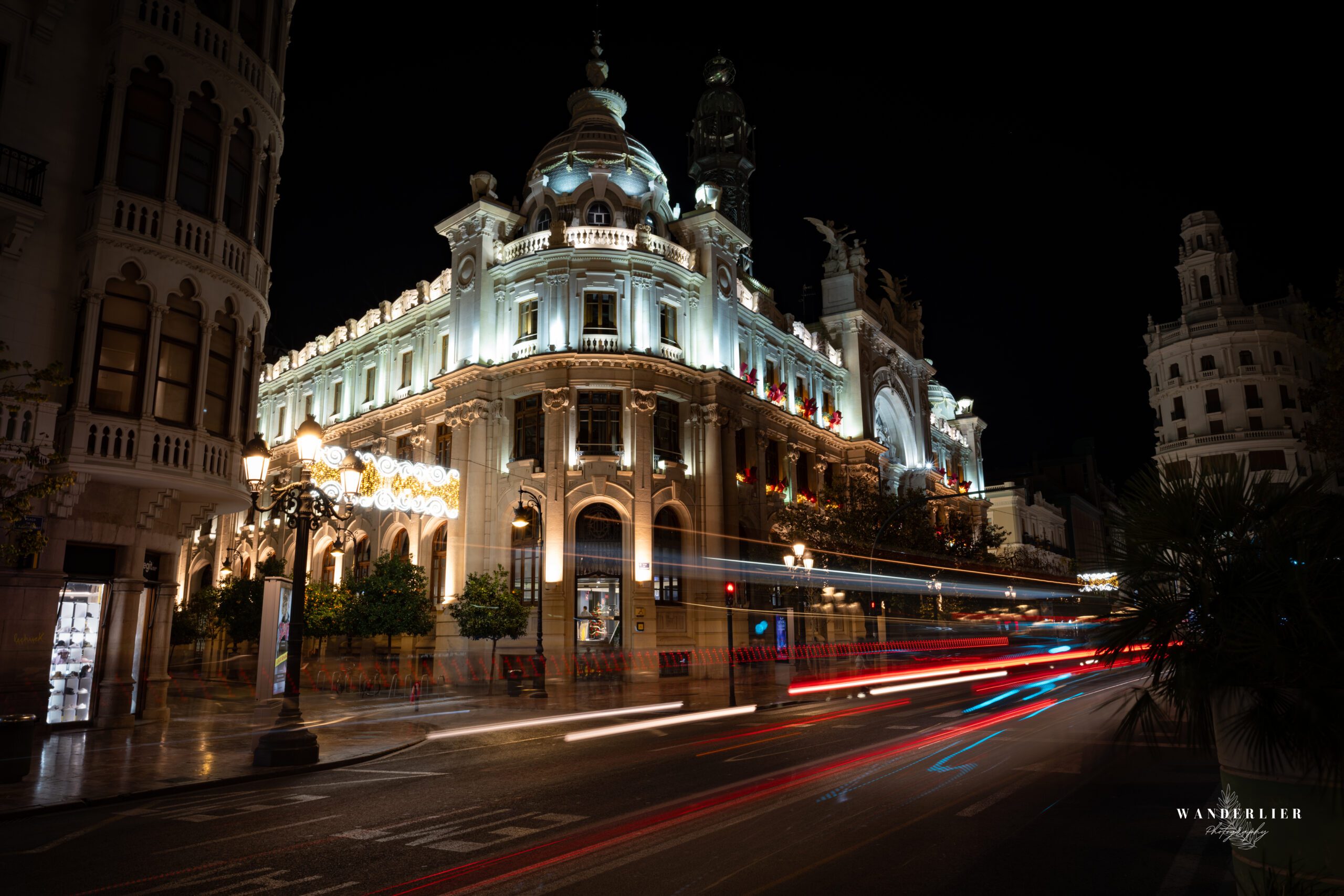
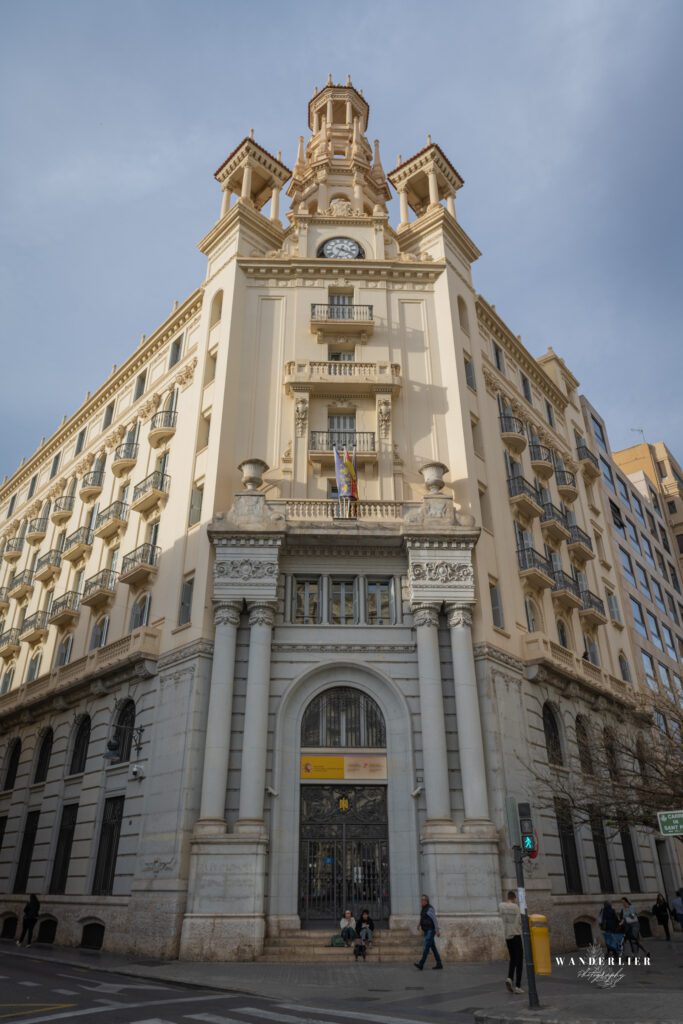
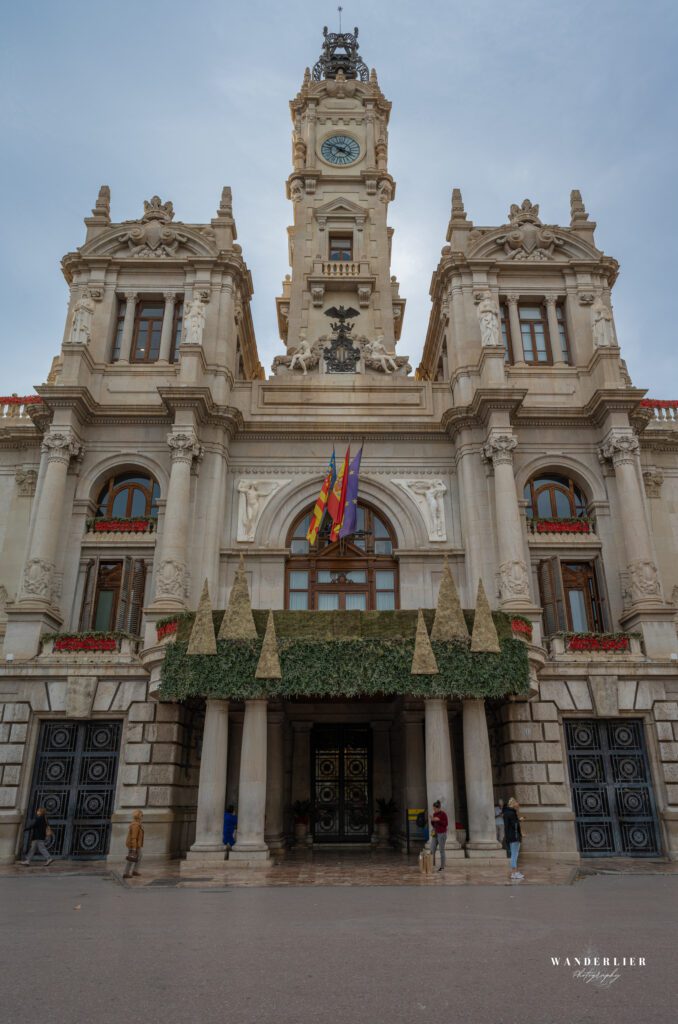
The Valencia Cathedral
The Valencia Cathedral, also known as the Basilica de la Virgen de los Desamparados, is an iconic monument in the heart of Valencia’s historic center. With its impressive architecture, rich history, and spiritual significance, the cathedral attracts countless visitors and pilgrims each year.
The construction of the cathedral began in the 13th century on the site of a former Islamic mosque. It took several centuries to complete, resulting in a cathedral that showcases a mix of architectural styles, including Gothic, Baroque, and Romanesque influences.
One of the most striking features of the cathedral is its tower, also known as El Miguelete. With its impressive height, the tower offers a panoramic view of Valencia and the surrounding areas. Climbing the stairs to the top is a popular activity for visitors, rewarded with breathtaking views.
The interior of the cathedral houses numerous chapels, altars, and artworks. One of its most revered treasures is the Holy Grail, which is said to be the cup used by Jesus at the Last Supper. This Holy Grail is kept in the Chapel of the Holy Grail, making it an important religious destination for the faithful.
Another remarkable feature of the cathedral is the chapel dedicated to the Virgen de los Desamparados, the patron saint of Valencia. Pilgrims and believers come here to pay homage to the Virgin Mary and her special role in the local spiritual history.
The cathedral is not only a spiritual center but also a cultural treasure. Concerts, exhibitions, and religious festivities regularly take place in this historic setting, contributing to the vibrant atmosphere of the cathedral.
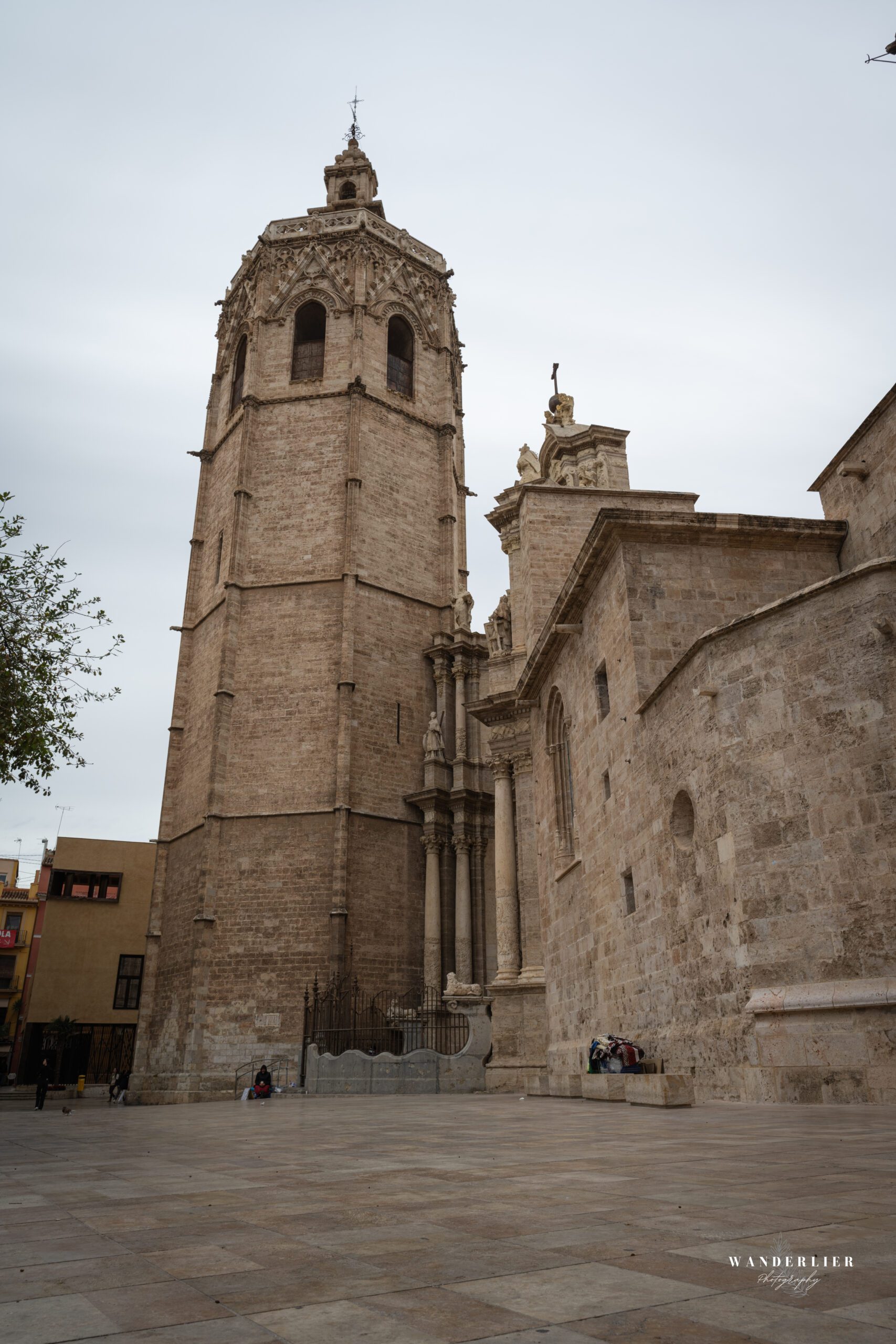
Plaça de la Verge
Plaça de la Verge, or the Square of the Virgin, is a historic and lively square in the heart of Valencia, Spain. This enchanting square, steeped in history and surrounded by impressive architecture, serves as a central point for both locals and tourists to enjoy the charm of the city.
A prominent feature of Plaça de la Verge is the Valencia Cathedral, which majestically overlooks the square. This Gothic cathedral, also known as the Basilica de la Virgen de los Desamparados, not only houses religious treasures, including the purported Holy Grail, but also offers a beautiful view from the Miguelete tower, which visitors can climb for a panoramic view of the city.
Another remarkable element of the square is the Basílica de la Mare de Déu dels Desemparats, dedicated to the patron saint of Valencia. It is a place of pilgrimage where pilgrims and visitors come together to pay their respects to the Virgin Mary.
Plaça de la Verge is surrounded by stately buildings, including the Palacio de la Generalitat, the seat of the regional government of Valencia. This Gothic palace contributes to the historic ambiance of the square and is an impressive example of Valencian architecture.
The square itself serves as a gathering place and central point for various cultural and social events. Local festivals, concerts, and celebrations often take place on Plaça de la Verge, making it a vibrant destination year-round.
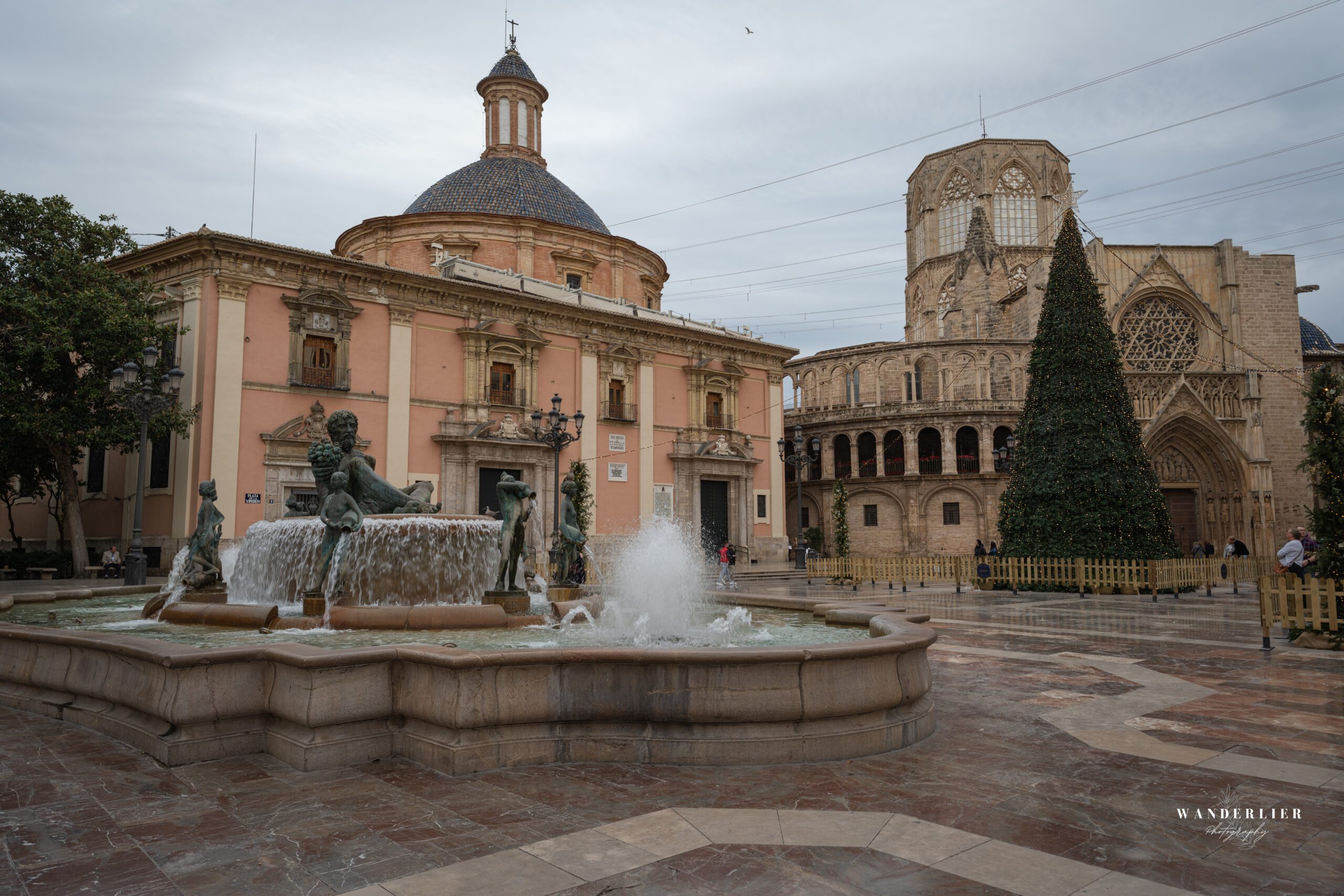
Torres de Serranos
The Torres de Serranos, or Serranos Towers, are a remarkable historical monument and one of the most recognizable landmarks in Valencia. These impressive medieval towers, built between 1392 and 1398, originally served as a city gate and have since become a symbolic emblem of Valencia’s rich history and heritage.
The towers are located at the northern end of the old city center and were a crucial defensive structure during the Middle Ages. They were built in Gothic style and served as one of the access points to the walled city. The name “Serranos” refers to the guards or soldiers who kept watch over the gates.
A striking feature of the Torres de Serranos is the imposing structure, with rectangular towers on both sides of the gate. The massive stone walls and strategically placed battlements reflect the original defensive function of the building. Atop the towers, a bridge offers a stunning view of Valencia and the surrounding areas.
Over the years, the Torres de Serranos have served various purposes, from a prison to a royal palace. Today, they primarily serve as a historical monument and cultural attraction. Visitors can climb the towers and enjoy a panoramic view of the city, making it a popular destination for both history enthusiasts and tourists.
Additionally, the Torres de Serranos are often used as a venue for cultural events and exhibitions, making them a lively focal point in Valencia’s cultural life. The area surrounding the towers is also a pleasant place to stroll, with parks and promenades that invite relaxation.
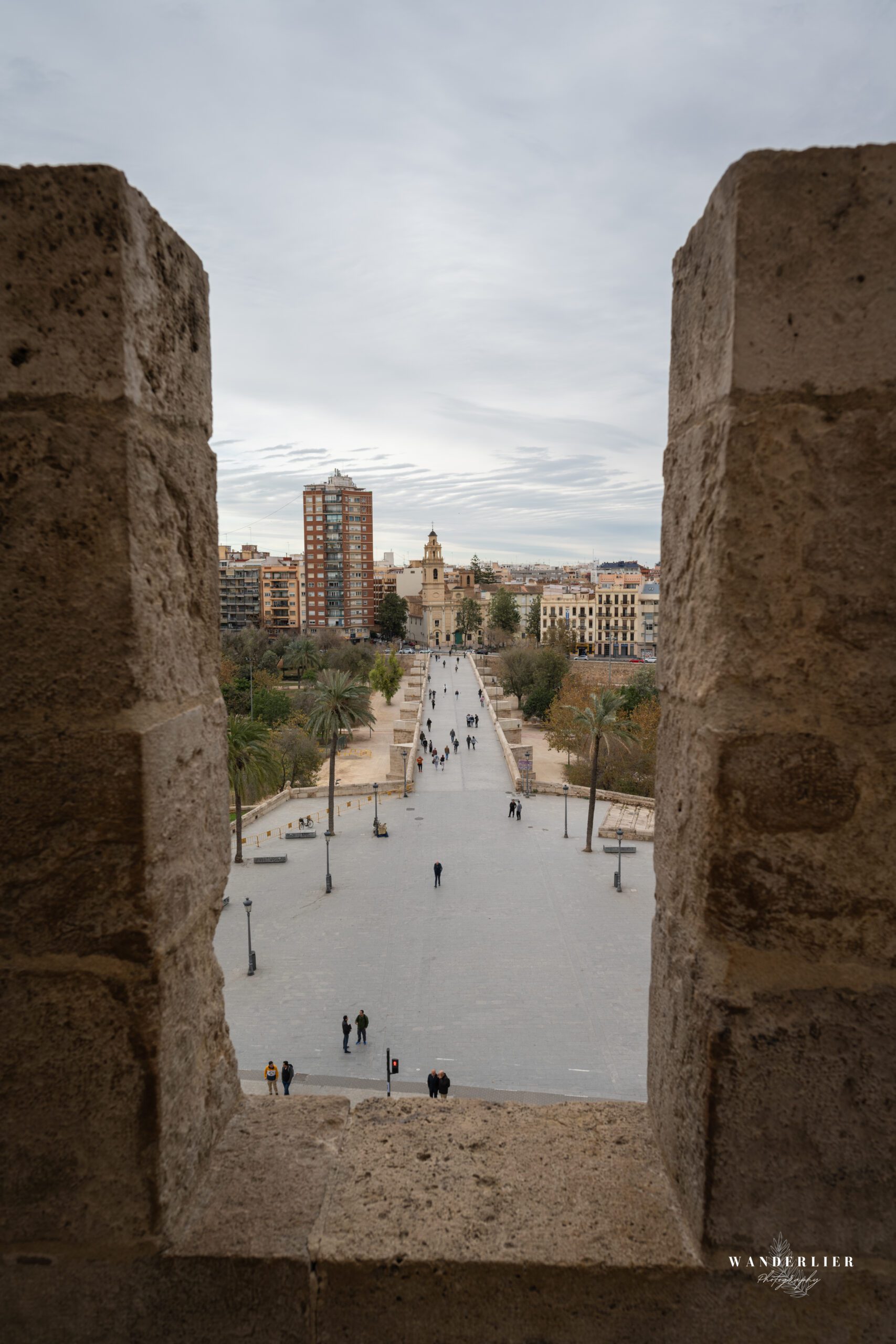
Mercat de Colón
Mercat de Colón, located in the heart of Valencia, is an architectural masterpiece and a vibrant marketplace that combines history and modernity. This market, built at the beginning of the 20th century, is named after the famous explorer Christopher Columbus and is known for its unique design and gastronomic diversity.
The building, designed by Francisco Mora Berenguer, reflects the influence of the Art Nouveau style, with striking elements such as ceramics, wrought-iron ornaments, and stained glass windows. Mercat de Colón is not just a marketplace, but also an architectural gem that enriches Valencia’s cultural heritage.
Inside Mercat de Colón, visitors will find a wide range of fresh products, local delicacies, and gourmet treats. The market has adapted to modern times by also providing space for various restaurants, cafes, and shops offering artisanal products. It is a meeting place where locals and tourists gather to enjoy culinary diversity and the vibrant atmosphere.
The central part of Mercat de Colón serves as an indoor market hall, where stalls offer fresh produce, meat, fish, cheese, and other food items. The market is a paradise for foodies and lovers of local specialties, where the authentic flavors of Valencia come to life.
In addition to the culinary experience, Mercat de Colón also hosts cultural events and art exhibitions. The market square is often the setting for local festivals and live performances, contributing to the lively and dynamic atmosphere of the market.
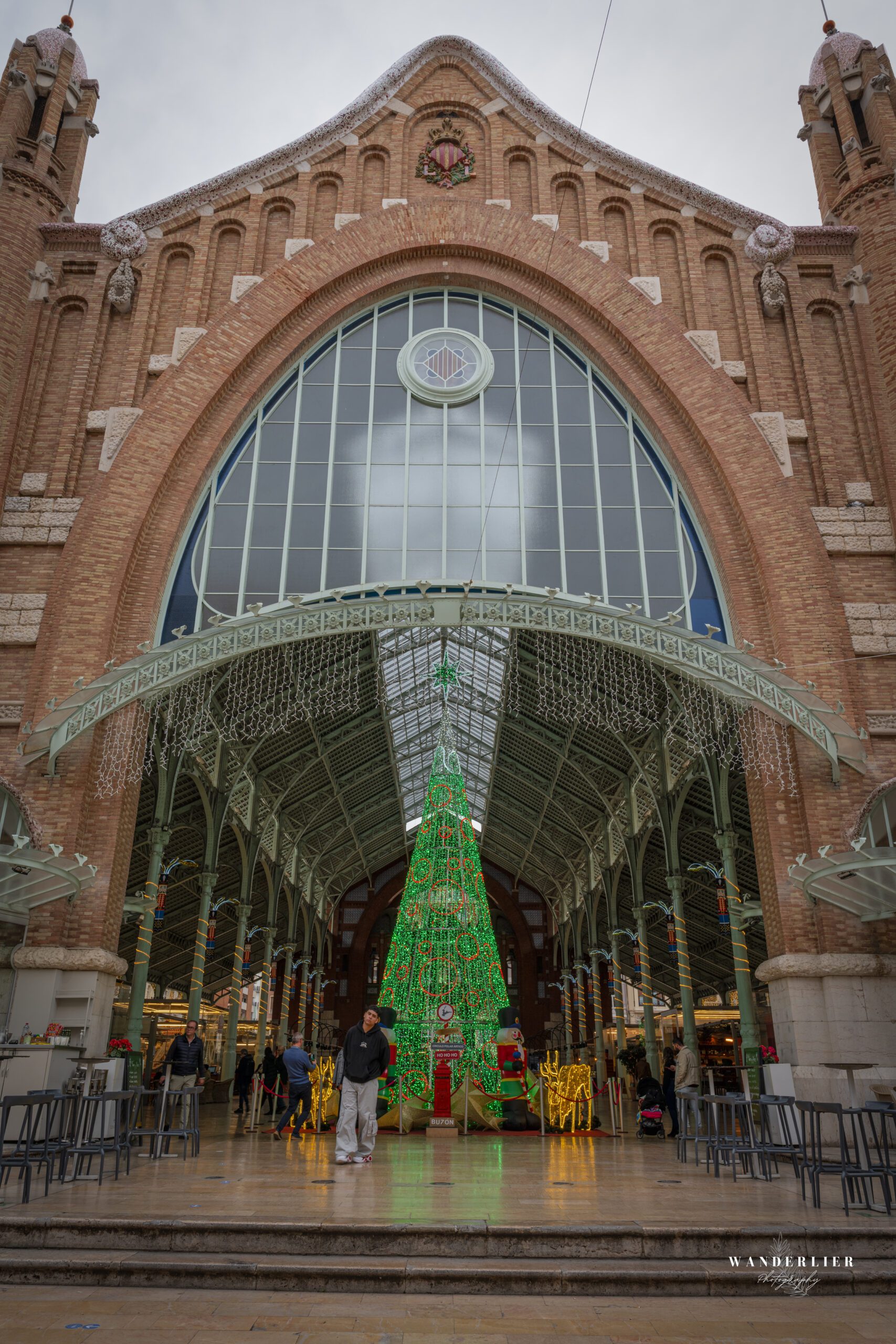
Jardí del Túria
The Jardí del Túria, or Turia Garden, is a green oasis and one of the most beloved public spaces in Valencia, Spain. This vast garden stretches over nine kilometers and follows the course of the former Turia River, which was diverted in the 1960s to prevent flooding in the city. The result is an impressive park that crosses the urban landscape, offering a wide range of recreational opportunities.
The park features various gardens, sports facilities, fountains, and playgrounds, making it a favorite destination for both locals and tourists. Bike paths and walking trails wind through the greenery, allowing visitors to enjoy a relaxing journey along the many sights of the park.
Several bridges cross the park, offering picturesque views of the surrounding areas. The diversity of flora, including palm trees, orange trees, and Mediterranean plants, adds to the park’s appeal, creating a relaxing and natural atmosphere.
For sports enthusiasts, there are also tennis courts, football fields, and athletics tracks, making the Jardí del Túria a versatile location for both recreation and active pursuits.
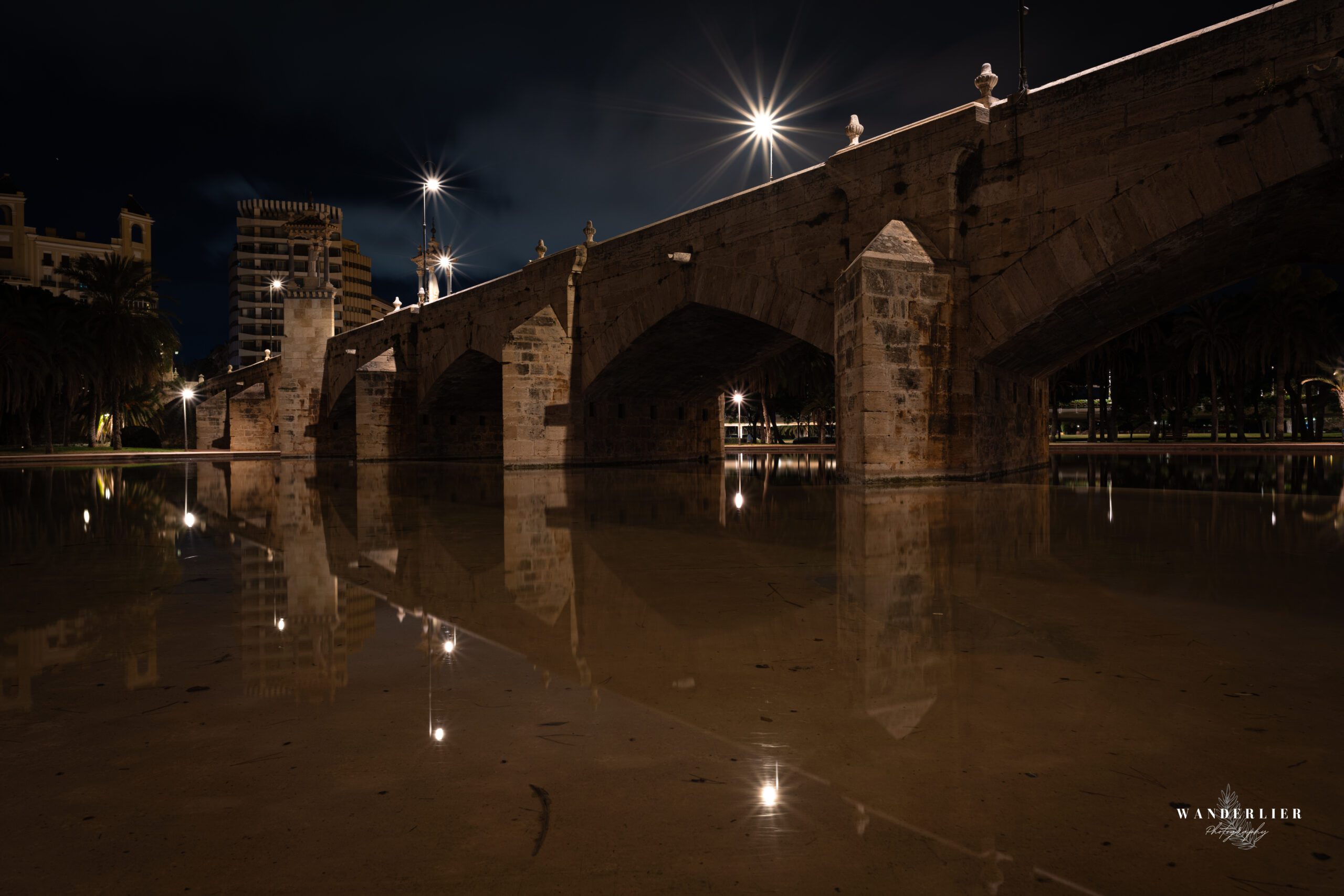
Estació del Nord
Valencia Station North, also known as Estació del Nord, is the city’s main train station in Valencia, Spain. Located in the heart of Valencia, the station is not only a hub for train travelers but also a remarkable architectural monument that reflects the city’s history.
The station was officially opened in 1917 and was designed by architect Demetrio Ribes. It features a distinctive modernist style, with architectural elements harmonizing with its surroundings. The station’s façade is impressive, with decorative details, arches, and sculptures that catch the eye.
Inside Valencia Station North, there is a spacious and light-filled hall with high vaulted ceilings and an abundance of natural light. The hall is characterized by striking details, including mosaic tiles and large stained-glass windows that enhance the space. The station exudes a nostalgic atmosphere, adding to its charm and character.
The station serves both regional and long-distance trains and plays a crucial role in connecting Valencia to other cities in Spain. The high-speed AVE train, for example, offers fast connections to cities like Madrid and Barcelona.
Surrounding Valencia Station North are various amenities, including shops, cafés, and restaurants, making the station not only a place for train travel but also a hub for social activities and meetings.
The nearby Plaza de Toros, Valencia’s bullfighting arena, and the vibrant city center are easily accessible from the station, making it a convenient departure and arrival point for both tourists and locals.
